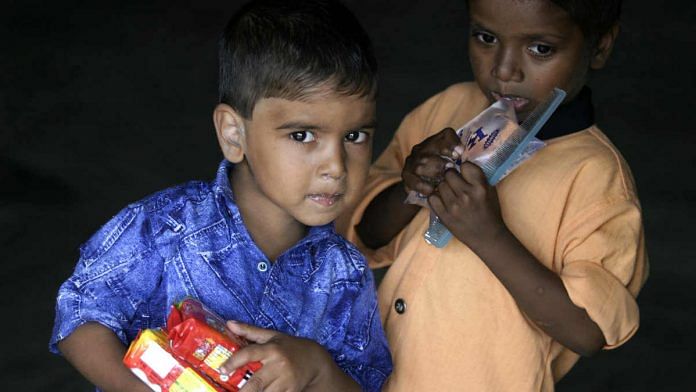New Delhi: In 2018, India reported the highest number of deaths of children aged below 5 years, a UNICEF report released Wednesday said.
India reported 8,82,000 child deaths, followed by Nigeria with 8,66,000 deaths and Pakistan with 4,09,000. However, the report said, the median under-five mortality rate per 1,000 live births in India is 37, while the figure is 120 for Nigeria and 69 for Pakistan.
Titled ‘The State of the World’s Children (SOWC)’, the report also stated that around 38 per cent Indian children under the age of five years suffer from stunting. There is also a state-wise disparity as “almost half of children are stunted in the worst-affected state compared with a fifth in the least-affected state”.
The SOWC report has ranked countries in the order of ‘highest burden of death among children of under-5’ to the ‘lowest burden of death among children of under-5’. Several countries, including Singapore, Denmark, Bahrain, New Zealand, were in the second half of the ranking with less than 1,000 deaths.
UNICEF’s SOWC report analyses the global state of children’s health vis-a-vis malnutrition, obesity, anaemia and other health issues.
Report lauds India’s health programmes
The UNICEF report quoted from other surveys, particularly the Comprehensive National Nutrition Survey (CNNS) released by India’s health ministry earlier this month, which noted that 35 per cent of under-five children are stunted, while 17 per cent are wasted and 33 per cent underweight.
The report acknowledged that the CNNS survey, conducted between 2016-2018, revealed the “extent and severity of micronutrient deficiencies, information on fat distribution and nutritional risk factors for non-communicable diseases (NCDs) and links between children’s nutritional status and their cognitive development”.
These findings can become a basis for India “scaling up dietary diversification and food fortification to address vitamin A deficiency”, according to the UNICEF report.
The SOWC report also concerned itself with unhealthy eating habits, stating that lower-income countries such as India “represent an unprecedented opportunity to the manufacturers and marketers of ultra-processed foods, fast food and sugar-sweetened beverages”. It said between 2011 and 2016, fast food sales grew by 113 per cent in India.
The report, however, also cited India’s example to explain how health and education policies can help impact children’s health in monumental ways.
It noted that multi-pronged strategies implemented by the Centre and state governments to support breastfeeding led to “a rise in early initiation of breastfeeding from 24.5 per cent in 2006 to 44.6 per cent in 2014”.
The report also cited the national weekly iron and folic acid supplementation programme launched by the government in 2012 and stated that by 2016–2017 “the national programme was reaching 36 per cent of the targeted adolescents”.
Also read: SC, ST children more likely to die before 5th birthday than non-SC/ST ones: Study



